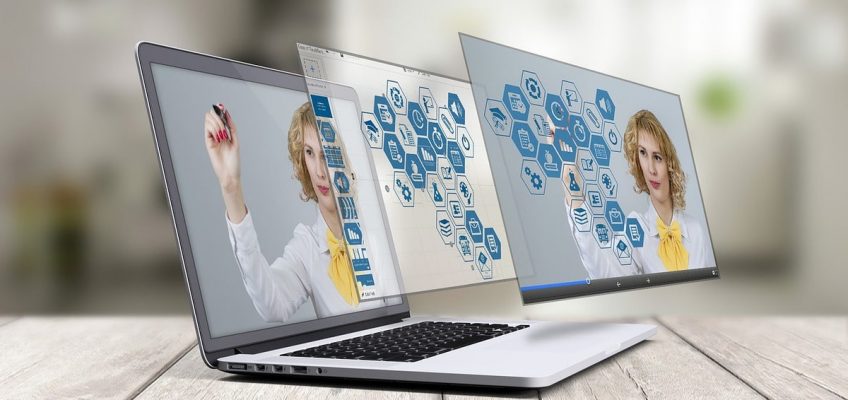A neuroscience perspective on how using immersive technologies such as Augmented Reality in troubleshooting and field service can revolutionize the customer experience.
Suppose you are a manufacturer, and your customer encounters a problem with your product. The product could be an appliance, a laptop computer, or a more complex piece of equipment like a generator. Your customer might attempt to troubleshoot the problem with online manuals or YouTube videos, or they might call the customer service helpline. Worst case scenario a technician must be dispatched to their home or place of business.
When using online manuals and YouTube videos, the customer is constantly attempting to convert abstract text, graphics or a video into actionable behaviors to fix the problem Click To TweetFrom a neuroscience of learning and performance perspective, all of these approaches are slow, error-prone, frustrating, and reduce customer confidence and satisfaction.
When using online manuals and YouTube videos, the customer is constantly attempting to convert abstract text, graphics or a video into actionable behaviors to fix the problem. The customer must constantly switch attention back and forth from the manual or video to the product while storing information in working memory. This process is challenging and places a heavy load on the cognitive and representational systems in the brain. From a cognitive perspective, the working memory, executive attention, and attention switching load is high. From a representational perspective, one must convert abstract information into an accurate mental representation. If lucky, the customer can fix the problem, but in many cases, they cannot.
The situation is no better on the phone with customer service. The customer struggles to find the words to describe the problem as they do not have the appropriate terminology available to communicate effectively. The customer service representative also struggles to translate the customer’s description into a meaningful dialogue to guide troubleshooting. Both the customer and the customer service representative feel like that are speaking different languages and communication is difficult. This is again a problem with cognitive and representational processing in the brain. Translating the problems and the solutions into words places a heavy load on working memory, attention, and mental representation processes. Both participants wish that the customer service representative could “see” the problem and “experience” the problem in real-time.
AR tools have great potential in troubleshooting and field service Click To TweetDispatching a technician takes time and costs money. The technician must also have the requisite training to troubleshoot and fix the equipment. Technicians differ in their experience and skill level and a novice technician may need to revisit the manual, call an expert for advice, or even ask that a more experienced technician visit the site. This costs the vendor time and money, and every second that the product is “down” represents an inconvenience, a potential loss in revenue and decreased customer confidence and satisfaction in the product.
Now imagine an Augmented Reality (AR) solution to this problem.
AR Alternative to Manuals and Videos
Suppose the customer does not wade through online manuals or videos with the need for constant attention shifts but instead focuses their phone or tablet camera on the device where step-by-step instructions are provided for how to troubleshoot the problem. Built-in algorithms instruct the customer on what to do using text, arrows, highlighting or other tools. Critically, these are all being presented overlaid on the customers’ view of the product. The problem will be fixed quickly, accurately and the customer will be up and running, and satisfied with the service.
AR Alternative to Calling a Help Line
Suppose the customer does not want to fix the problem themselves but rather wants guidance. Instead of struggling with the communication problems inherent in a phone conversation suppose the customer focuses their phone or tablet camera on the device so that a customer service representative can see the product. Using AR software that includes text, arrows, highlighting or other tools, the representative can walk the customer through the troubleshooting process. The AR assets mitigate problems with communication fixing the problem quickly, accurately and leaving the customer satisfied.
AR Field Service
With the retirement of expertise in the industrial and manufacturing sectors, many field service technicians do not have the experience to solve all problems. With AR, when the field technician runs into trouble and needs guidance from an expert, they can use their phone, tablet, or wearable device to provide a first-person view for a more experienced remote field technician. This reduces the need for all technicians to have broad-based expertise.
AR provides experiences for human users, but it is critical that the content and temporal aspects of the presentation are optimized for human consumption Click To TweetAR tools have great potential in troubleshooting and field service. If your organization is interested in integrating AR tools into your troubleshooting and field service then a few considerations are in order. First, and foremost, AR provides experiences for human users, but it is critical that the content and temporal aspects of the presentation are optimized for human consumption. Augmented information can reduce the cognitive load, but can also overload the user with unnecessary information. Look for vendors who address these issues specifically and can present data to support the effectiveness of their offering. Second, if you are considering a do-it-yourself AR authoring tools be careful of the risk of cognitive overload. Good experimental testing and modification to optimize your tool is in order. Your goal is to provide users with “what” they want, “where” they need it, and “when” they need it.
Tech Trends offers a broad range of Digital Consultancy services to guide companies, individuals and brands in effectively leveraging existing and emerging technologies in their business strategy.
Todd Maddox is Science, Sports and Training Correspondent at Tech Trends, and the CEO of Cognitive Design and Statistical Consulting. Follow him on Twitter @wtoddmaddox









